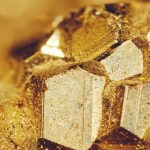The best automated precious metal investment metal insights
Silver’s Technical Breakout: Riding the Bullish Wave – Goldminr
Introduction:
Silver, often dubbed “the poor man’s gold,” is currently making headlines as it experiences a significant technical breakout. As of October 1, 2025, silver reached $47.19 USD/t.oz, marking a 1.13% increase from the previous day. This surge is part of a larger trend, with silver’s price rising 15.35% over the past month and a remarkable 48.18% compared to the same time last year. This bullish momentum has investors and analysts alike wondering if silver is finally poised to shatter its long-standing resistance and embark on a new era of price appreciation.
Understanding the Technical Breakout
A technical breakout occurs when an asset’s price breaks through a defined resistance level, suggesting a potential shift in market sentiment and a continuation of the upward trend. In silver’s case, this breakout is particularly noteworthy due to the extended period of consolidation it follows.
Key Factors Driving the Bullish Wave
Several factors are converging to fuel silver’s current rally:
-
Supply and Demand Dynamics: The fundamental principle of supply and demand plays a crucial role in silver’s price movement. The silver market is currently experiencing a supply deficit, with industrial consumption and investment demand outpacing mining production. The Silver Institute projected the silver market will end the year at a deficit for a fifth consecutive time as global output is expected to total 844 million ounces in 2025, 100 million ounces short of demand. This imbalance creates upward pressure on prices.
-
Industrial Demand: Silver’s unique properties make it indispensable in various industrial applications, including electronics, solar panels, and electric vehicles. The green energy transition is creating insatiable demand for silver in solar photovoltaic (PV) cells and electric vehicles (EVs). Each solar panel requires 15–20 grams of silver, and EVs use twice as much silver as traditional vehicles. With global silver fabrication projected to exceed 700 million ounces in 2025, industrial demand is set to outpace supply, creating a structural deficit that could push prices higher.
-
Investment Demand: As a precious metal, silver serves as a safe-haven asset during times of economic uncertainty and inflation. Rising inflation pushes silver prices higher, while rising interest rates tend to lower them. Investment demand typically spikes during periods of low interest rates, geopolitical risk, or market volatility. The current cycle is marked by gold-silver ratio shifts, increasing ETF inflows, and heightened retail demand—especially in the U.S., Germany, and India.
-
Monetary Policy: Central bank policies, particularly those related to interest rates and currency devaluation, can significantly impact silver prices. Lower interest rates make silver more attractive, while higher rates make bonds and savings accounts more attractive. Lower interest rates also correlate with a larger money supply. The more money bouncing around the system, the higher the silver price.
-
Geopolitical Factors: Geopolitical instability and trade tensions can also drive investors toward safe-haven assets like silver, further boosting its price. Unfavourable government policies, political instability, regulatory changes associated with mining or the environment, trade policies and geopolitical tensions influence silver prices.
Technical Indicators and Price Targets
Technical analysts are closely monitoring silver’s price action, with many pointing to a potential retest of all-time highs around $50. A decisive breakout above $50.00, whether later this year or in early 2026, would mark a generational shift in the market, potentially triggering a rapid move toward $75.00 and ultimately $100.
The Gold-Silver Ratio
The gold-to-silver ratio, which measures the amount of silver required to purchase one ounce of gold, is a key indicator of silver’s relative value. Historically, ratios closer to 60 have been common during strong silver bull markets, suggesting silver may still be undervalued relative to gold if industrial demand remains strong.
Investment Strategies for Riding the Bullish Wave
For investors looking to capitalize on silver’s technical breakout, several strategies can be considered:
-
Physical Silver: Investing in physical silver, such as coins or bars, provides direct exposure to the metal’s price movements.
-
Silver Mining Stocks: Investing in companies involved in silver mining can offer leveraged exposure to silver prices, as their profitability is directly tied to the metal’s value.
-
Silver ETFs: Silver exchange-traded funds (ETFs) provide a convenient way to invest in silver without the need to store physical metal.
-
Dollar-Cost Averaging: Dollar-cost averaging, which involves investing a fixed amount of money at regular intervals, can help mitigate the risk of buying at the top of the market.
Risk Management
While silver’s technical breakout presents exciting opportunities, it’s essential to acknowledge the inherent risks associated with investing in precious metals. Silver prices can be volatile and influenced by various factors, including economic data releases, geopolitical events, and changes in investor sentiment.
Here are some risk management techniques to consider:
- Position Sizing: Limit your allocation to an appropriate percentage of your portfolio.
- Stop-Loss Orders: Implement stop-loss orders to limit potential losses.
- Diversification: Diversify your portfolio across different asset classes to reduce overall risk.
The Role of Enforcement and Legal Considerations
As with any investment, it’s crucial to be aware of the legal and regulatory landscape surrounding silver investments. Investors should ensure they are dealing with reputable dealers and custodians and that all transactions comply with applicable laws and regulations.
Conclusion:
Silver’s technical breakout in 2025 presents a compelling investment opportunity, driven by a confluence of factors, including supply deficits, rising industrial demand, and macroeconomic tailwinds. While risks remain, a well-informed and strategic approach can position investors to potentially benefit from silver’s ongoing bullish wave.
Disclaimer: This blog post is for informational purposes only and does not constitute financial advice. Investors should conduct their own research and consult with a qualified financial advisor before making any investment decisions.




